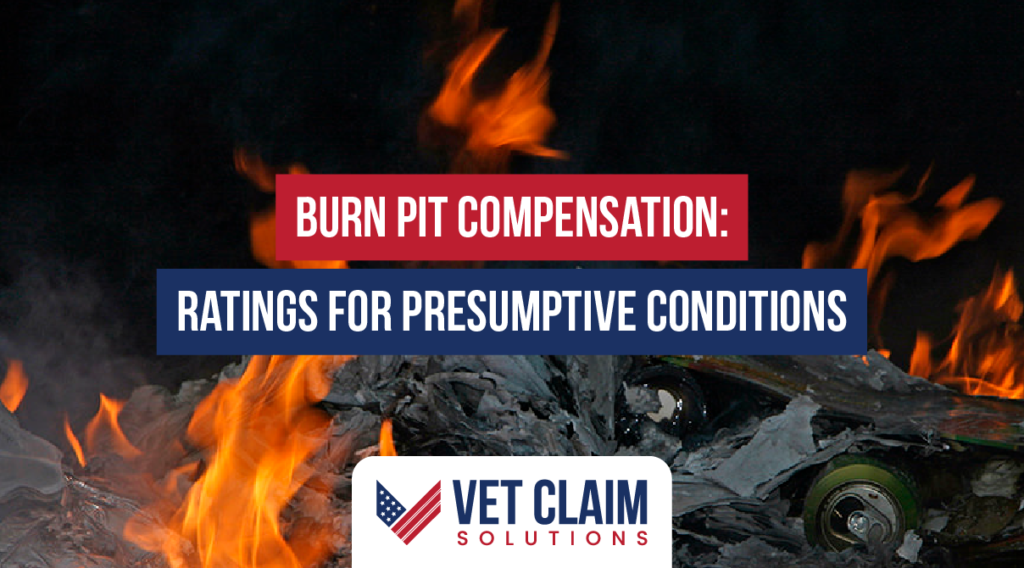Imagine being at the brink of a huge open area, with smoke climbing up into the atmosphere. That’s what burn pits looked like during your military service—a necessary evil that now haunts many veterans with health issues. Navigating Burn Pit Compensation and Ratings for Presumptive Conditions feels just as hazy to some.
The good news? There’s light cutting through that smoke. The VA has recognized certain conditions—respiratory diseases, various cancers—as connected to these toxic fumes. And you might be eligible for benefits because of them.
You’ve faced battles before; this is another one you can win with the right intel and allies by your side.
By diving in here, you’ll find out how to prove a direct link between your service and those health concerns from burn pit exposure or tackle related secondary conditions cropping up later down the line.
Hang tight—helping hands are ready to pull you through this process so that compensation isn’t just possible but within reach.
Understanding Burn Pit Compensation and Ratings for Presumptive Conditions

When our veterans come home, some battles follow them. Among these is the fight for rightful compensation due to health conditions from burn pit exposure—a reality faced by many who served bravely.
Direct Service Connection for Burn Pit Exposure
The VA acknowledges that direct service connection exists when your military service directly leads to a health issue. Think of it like connecting the dots; one leads straight to another. If you were exposed to an open burn pit during your time in uniform, this could be a major player in respiratory cancers or chronic obstructive pulmonary diseases you might face today.

This isn’t just about linking symptoms with causes; it’s about painting a picture so clear that there’s no room left for doubt. That means gathering evidence—military records showing where you served, medical tests proving your condition—it’s all part of building an ironclad case so you can get what’s rightfully yours: VA disability benefits.
Secondary Service Connection and Associated Conditions
Burn pits don’t stop at primary ailments—they’re more insidious than that. Sometimes they kick off a domino effect leading to secondary conditions such as gastrointestinal cancer or constrictive bronchiolitis—conditions not immediately obvious but devastating nonetheless.

A key thing here? You’ve got backup. With the PACT Act now recognizing 23 presumptive conditions related to toxic exposures like burn pits, vets have more ground covered under their belt—or should we say armor?
If smoke from those notorious military burn pits clouded your days overseas and now haunts your health back home, remember: It’s not just lung disease on the table but also associated afflictions including kidney cancer and reproductive cancers—all recognized by Uncle Sam’s own system designed to support his troops post-service through things like the Burn Pit Registry. And if battling through paperwork sounds daunting alone, never fear—the right resources are out there waiting for soldiers readying themselves once again…this time armed with facts against red tape.
Key Takeaway:
When burn pit exposure from service affects your health, link the dots between military records and medical evidence to build a strong VA disability claim. Remember, with 23 conditions now presumptively linked to toxic exposures by the PACT Act, you’re better armed in this battle for benefits.
Veterans aren’t just fighting lung diseases; they’re up against secondary afflictions like cancers recognized by the VA. With resources like the Burn Pit Registry at hand, gearing up with facts can turn daunting paperwork into deserved compensation.
VA Disability Rating and Compensation Process Explained
Veterans who have bravely served may face a new battle when dealing with health issues related to burn pit exposure. The VA steps up, offering disability ratings that translate into compensation, but the process can feel like navigating through an unfamiliar terrain.
Direct Service Connection for Burn Pit Exposure
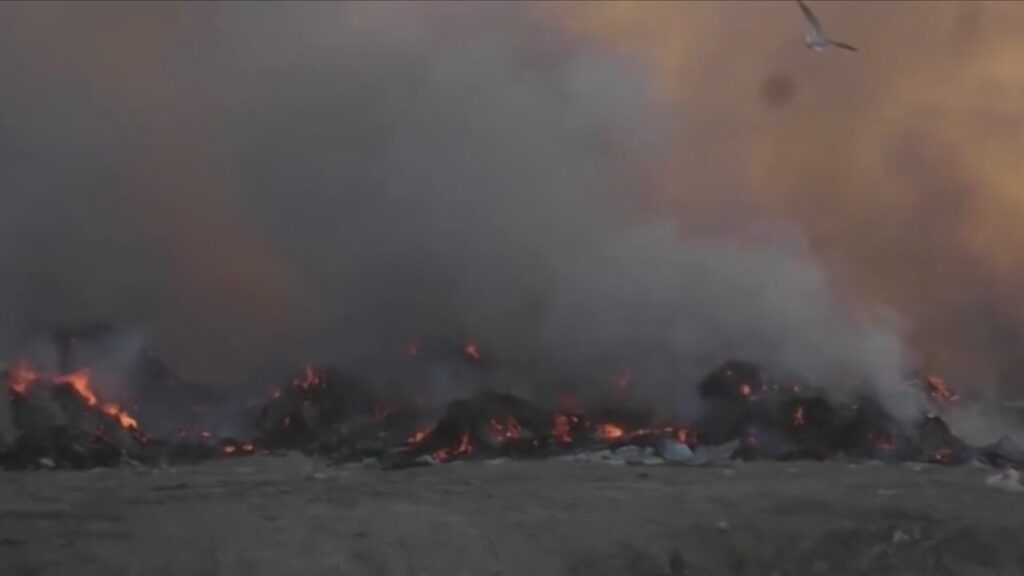
To get benefits rolling, veterans need to prove a direct service connection. This means linking their current health woes directly to those menacing military burn pits they encountered during service. If you were stationed where open burn pits billowed out smoke and toxins, establishing this link is crucial.
A solid starting point is registering with the Airborne Hazards and Open Burn Pit Registry. It’s like leaving breadcrumbs for the VA to follow back to your days of inhaling hazardous fumes in uniform. Plus, it sets the stage for potential healthcare down the road.
Secondary Service Connection and Associated Conditions

The story doesn’t end there; some conditions play hide-and-seek only showing up after primary problems caused by toxic exposures settle in. For example, respiratory cancers might emerge on top of chronic obstructive pulmonary disease (COPD), both potentially rooted in that nasty pit exposure from years ago.
Filing claims for secondary conditions can be trickier than playing chess blindfolded—okay maybe not that hard—but it does demand understanding how these ailments connect back to your military service indirectly yet undeniably.
The Comprehensive List of Presumptive Conditions Linked to Burn Pits
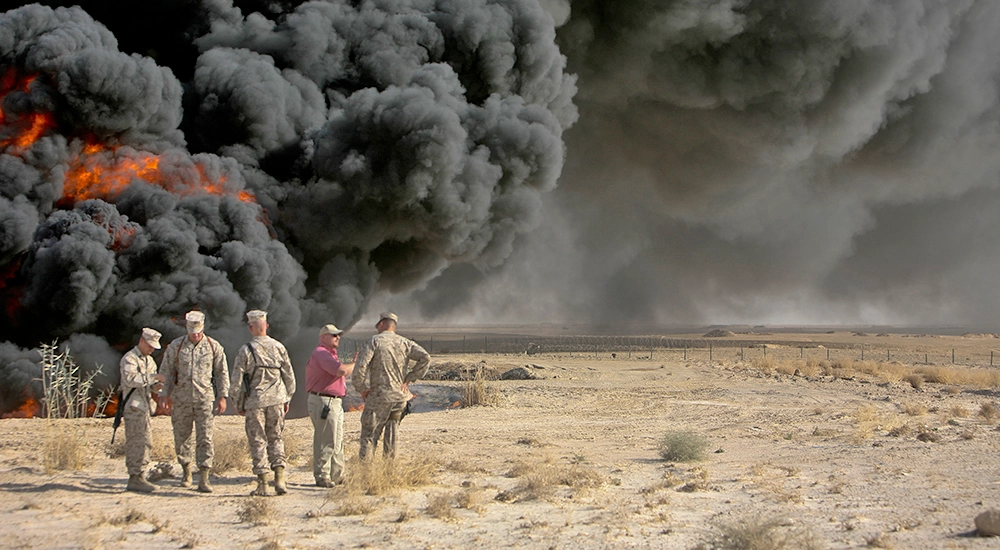
Cue drumroll. Because here comes something hefty: The PACT Act recently recognized 23 presumptive conditions connected to toxic airborne hazards—including kidney cancer and reproductive cancer among others—that could bump up your rating faster than you can say “compensation.”
Navigating the Compensation and Pension Exam
Gearing up for a C&P exam? Think less ‘doom’ more ‘opportunity’. Here’s where everything gets real—you meet face-to-face with a medical professional who assesses whether Uncle Sam should sign off on those monthly checks because of what you breathed in while serving our country.

Remember though – we’re talking about Vet Claim Solutions here – think Sherlock Holmes meets veteran advocacy – they’re all about maximizing your chances at getting what’s rightly yours without making it feel like pulling teeth.
And hey—if ever lost or confused throughout this labyrinth-like process—groups exist solely dedicated to helping vets just like you navigate these murky waters towards brighter shores.
Key Takeaway:
When burn pit exposure from service affects your health, link the dots between military records and medical evidence to build a strong VA disability claim. Remember, with 23 conditions now presumptively linked to toxic exposures by the PACT Act, you’re better armed in this battle for benefits.
Vets, connect your health issues to burn pit exposure for benefits. Start by registering with the Burn Pit Registry and prove that link—it’s key. Think of secondary conditions as hidden foes; show how they relate back to service. The PACT Act could be your fast pass to higher compensation.
Face the C&P exam with confidence; it’s a chance to validate your claim. Remember, expert groups are ready to guide you through this maze—aiming for the comp you deserve without the headache.
The Comprehensive List of Presumptive Conditions Linked to Burn Pits
When smoke billows from a military burn pit, it’s not just the fire that rages. Veterans carry the aftermath in their lungs and bodies, often facing chronic health battles long after service. Thanks to recent strides by the VA, acknowledging these invisible wounds has led to recognizing an extensive list of presumptive conditions linked directly to toxic burn pit exposure.
Respiratory Diseases Recognized by the VA

Veterans who stood against a backdrop of open burn pits now find themselves fighting on another front: respiratory diseases. The VA acknowledges several lung warriors like chronic bronchitis and interstitial lung disease as connected with this hazardous duty. These aren’t mere coughs or colds; they are life-altering conditions such as pulmonary fibrosis and granulomatous disease – each carrying its own battle scars.
To further support affected veterans, Congress passed legislation broadening compensation eligibility through the PACT Act. This act added 23 presumptive conditions related to those menacing plumes of military service past – a recognition that speaks volumes for our nation’s heroes seeking rightful VA benefits.
Cancers Attributed to Toxic Burn Pit Exposure
What does breathing in toxic fumes yield? A sinister lottery where no one wants their number called. Yet for some vets, malignancies such as kidney cancer or gastrointestinal cancer become grim realities due largely in part because they breathed air thickened with poisonous effluence during their time in uniform.

In response, the department overseeing veteran affairs doesn’t turn away but instead faces these challenges head-on by offering disability compensation based on a connection between certain cancers—like reproductive or neck cancer—and inhaling harmful emissions from combustions at close range during military service timespanning conflicts old and new alike.
Burn pits have left an indelible mark on our servicemen and women’s health charts—a mark that cannot be erased but can be addressed through vigilant care strategies designed specifically around combat-related exposures like those encountered when serving near combustion zones overseas amid wars fought bravely if not without cost both seen…and unseen too still today.
Key Takeaway:
Veterans who’ve inhaled smoke from burn pits face serious health issues like chronic respiratory diseases and cancers. The VA now recognizes these conditions, offering disability compensation to those affected by toxic exposures during service.
The Role of the Burn Pit Registry in Documenting Exposure
For veterans who’ve stood shoulder to shoulder with danger, the Airborne Hazards and Open Burn Pit Registry is a beacon. It’s more than just a list; it’s where you plant your flag and say, “Yes, I was there.” The registry serves as both acknowledgment and evidence for those exposed to military burn pits.
Tracing your steps back to the source is as easy as leaving a trail of breadcrumbs. Veterans document their exposure history here—detailing when they served near open burn pits or encountered other airborne hazards. But this isn’t just about looking backward; registering can help vets stay one step ahead by alerting them to health concerns linked with that service.
Veterans Exposed: The First Step Toward Acknowledgement
When vets add their names to the registry, they’re not only taking charge of their health narrative but also helping paint a bigger picture for research purposes. By joining forces on this platform, our servicemen and women create powerful data that shouts louder than any single voice could alone—a collective call for action against conditions caused by toxic exposures.
Health Concerns? Let Your Voice Be Heard.
Taking part in the registry does more than just note down what happened—it’s an active stance towards getting much-needed recognition from systems often slow on uptake. As researchers analyze patterns among registered veterans’ health issues—from respiratory cancers triggered by inhaling noxious fumes at close quarters—to rarer ailments once shadows flickering out of sight—they build stronger cases for disability compensation claims rooted deeply in reality rather than supposition.
In essence, documenting your story within the Burn Pit Registry doesn’t merely echo across empty halls; it reverberates through hallways where decisions are made about which battles get fought next—the ones affecting real lives long after uniforms are hung up.
Key Takeaway:
Joining the Burn Pit Registry is a bold move for vets to claim, “I was there,” and push for recognition. It’s not just about past exposure—it’s proactive health care and fueling research that leads to real compensation.
Veterans stepping up to document their experiences make a powerful collective impact, leading to more robust data for change. The registry isn’t whispering into the void; it’s making noise where it counts.
How To Navigate the Compensation and Pension Exam for Presumptive Conditions
Veterans, gear up because we’re about to tackle that crucial step in securing your VA benefits: the Compensation and Pension (C&P) Exam. This is where you validate those health concerns from burn pit exposure—no pressure, right? But don’t sweat it; consider this your map through uncharted territory.
What to Expect at Your C&P Exam
The exam can feel like a cross between an interrogation and a physical check-up—but it’s all to get you the compensation you deserve. Here’s what goes down: A VA-approved clinician will assess whether conditions like respiratory cancers or chronic obstructive pulmonary disease are indeed linked to that infamous military service of yours.
You might think it’s just another routine medical appointment but buckle up. They’ll dive into every detail of your service records and medical history faster than a submarine on a covert mission. Be ready with specifics about how open burn pits have affected you over time because vague answers won’t fly here.
Diagnostic Codes – The Secret Language of Your Claim
In this maze called the VA system, diagnostic codes are like secret passcodes—they can unlock higher ratings if used correctly. Each condition recognized by the PACT Act has its own code; brain cancer isn’t seen as equal to gastrointestinal cancer under their watchful eyes.
To give yourself an edge, do some recon before D-Day: Learn which codes match your conditions so when they talk numbers, you’re not caught off guard. Think of these codes as pieces on a chessboard—you need them strategically aligned for checkmate.
Tips for Making It Through Unscathed
Firstly, bring documentation hotter than fresh jalapeños—medical records that tie directly back to pit exposure during active duty—and make sure they’re organized better than color-coded files in an OCD enthusiast’s cabinet.
If nerves threaten to take hold remember why you’re there—to fight for what’s rightfully yours after serving our country bravely amidst toxic smoke clouds no less hazardous than dragons’ breath.
The VA website may seem denser than Shakespearean prose at times but sift through carefully—it holds valuable intel that could bolster your case against seemingly invincible bureaucratic foes.
Remember folks—the key is preparation seasoned with patience; face this beast armed with knowledge straight from the Burn Pit Registry, then let truth be told within those clinic walls.
Key Takeaway:
Veterans, prepare for your C&P Exam with a clear game plan: know the specific health effects from burn pits, bring solid medical evidence, and learn the VA’s diagnostic codes. Your mission is to show how service-related exposure has impacted you—get ready to secure what you’ve earned.
Resources Available for Veterans Affected by Burn Pits
Veterans grappling with health issues from burn pit exposure often feel they’re in a tough battle. But you’re not alone, and there are resources tailored to help you through this fight. Advocacy groups have sprung up like guardian angels, offering both guidance and support when tackling VA claims.
VA Resources That Pack a Punch
The VA has come forward with programs designed to address the unique challenges faced by veterans exposed to burn pits. One key weapon in your arsenal is the VA’s PACT Act, which throws down 23 presumptive conditions related to those toxic fumes you braved during service. This means if any of these ailments are dogging your heels, linking them back to military service might just be a tad easier now.

A powerful ally here is the Burn Pit Registry. Signing up can feel like planting a flag that says “I was there”. It documents your exposure history, adding weight behind any claim linked directly or indirectly—think respiratory cancers or constrictive bronchiolitis—to that darned pit smoke.
Rallying Support Groups and Veteran Organizations
You’ve got troops on the ground ready to back you up too. Support groups across states stand united with vets facing off against post-service health concerns due to open burn pits—and let’s face it, camaraderie never grows old. They offer more than just an ear; they give actionable advice on navigating choppy VA benefits waters.

Finding Legal Assistance Tailored For Vets Like You
Sometimes what we need most is someone who speaks ‘legal-ese’ fluently enough but also gets where we’re coming from as vets. Legal assistance for VA claims doesn’t only throw legalese at us but deciphers it into plain ol’ talk so we know exactly how our battles will play out in courtrooms—or better yet, avoid them altogether.
We all know no soldier left behind isn’t just about physical battlegrounds—it’s true even after hanging up the uniform when dealing with unseen enemies like obstructive pulmonary disease or kidney cancer courtesy of military service time spent around those blasted burn pits.
Key Takeaway:
Struggling with health issues from burn pit exposure? You’ve got a squad of resources, including the VA’s PACT Act and Burn Pit Registry, plus advocacy groups and legal pros who speak your language and know how to fight for you.
Comparing Agent Orange & Burn Pit Claims Processes
Veterans who’ve been through the wringer know that seeking benefits for conditions like those from Agent Orange and military burn pits can feel like comparing apples to oranges. Let’s slice into this: both involve toxic exposures, but they unfold in different eras with unique presumptive conditions.
Similarities & Differences in Compensation

The VA recognizes certain health issues as presumptive conditions, meaning there’s a recognized link between the illness and exposure during military service—no need for a game of detective. For Agent Orange, it’s a list dating back to Vietnam-era veterans with diseases such as Parkinson’s. Contrastingly, the recent PACT Act has added 23 new kids on the block related to burn pit exposure—from respiratory cancers to constrictive bronchiolitis.
Military burn pits cancer or chronic obstructive pulmonary disease don’t care about timelines—they’re equally ruthless whether from jungles or desert sands. But here’s where paths diverge: while claims processes share DNA in proving service connection and impact on life quality, they split when it comes down to evidence gathering—a simpler task nowadays thanks to technology advancements like the Burn Pit Registry.
Paved Roads Versus Uncharted Trails
Weighing up these compensation trails is akin to choosing hiking paths—one well-trodden; one still getting its footing. With Agent Orange claims resting on decades of battles fought by veterans before them leading towards clearer guidelines whereas navigating burn pit compensations? It’s more akin to trekking through fresh snow without footprints guiding your way forward yet.
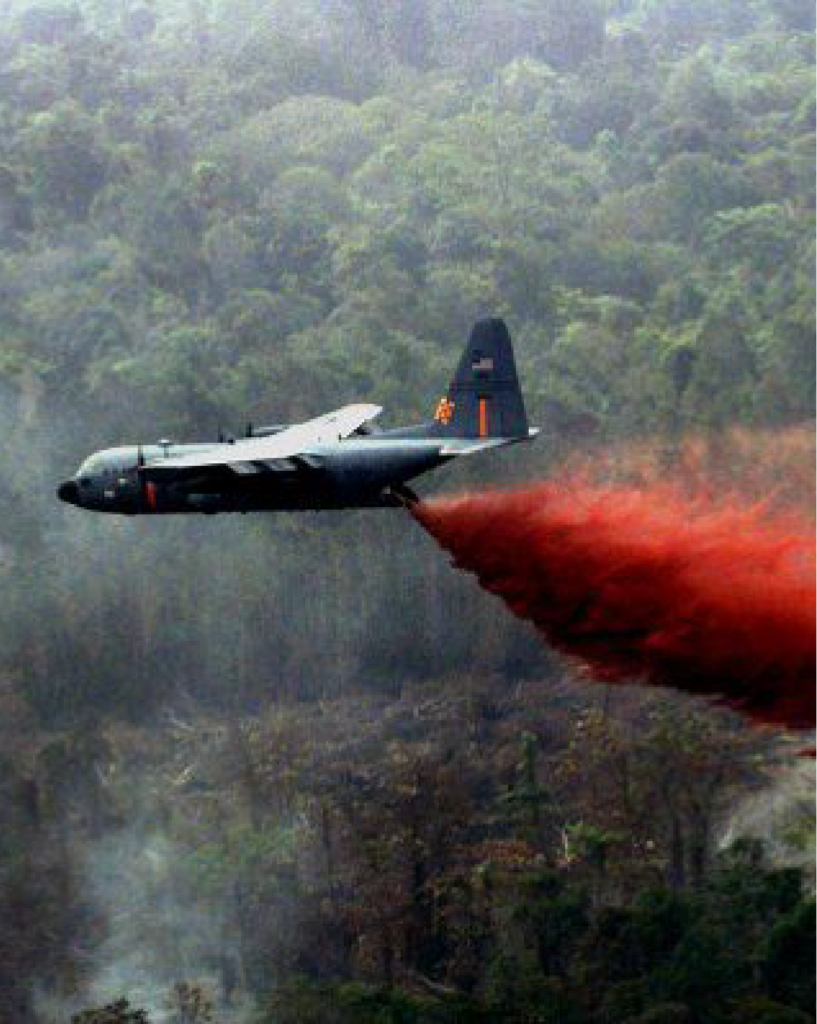
Sure enough though – no matter which path you’re marching down – an army of support awaits you at Vet Claim Solutions™. We help customers arm themselves with evidence and cut through red tape so their march toward justice doesn’t turn into an endless slog.
Key Takeaway:
Veterans facing health issues from Agent Orange or burn pits can skip the detective work, as VA recognizes certain conditions automatically. But, while Vietnam vets have a clear map for claims with established guidelines, those affected by burn pits are charting new territory without set paths—though help is ready to guide them.
Steps To Apply For Benefits With Presumptive Conditions From Burn Pits
If you’re a vet who’s been through the wringer with burn pit exposure, knowing how to get VA benefits is crucial. You’ve served; now it’s time for some payback for your health concerns.
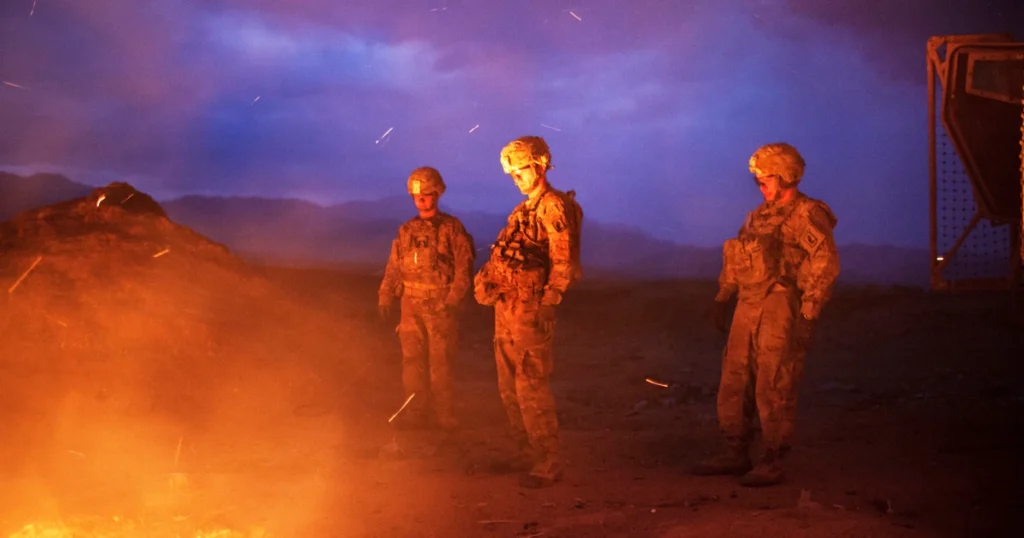
To begin the process of obtaining VA benefits, let’s start by discussing how to apply. First up, gathering evidence is key. Your military service records are gold here—they show where and when you were exposed to those nasty burn pits. And if you’ve got any medical records linking that exposure to your current condition? Jackpot.
Next, register yourself on the Burn Pit Registry. It’s not just another form—it’s proof in black and white of what you’ve been breathing in.
Navigating the Claims Process Like a Pro

The claims process can be as tangled as headphones in your pocket but hang tight. Working with a Veterans Service Organization can make this less of a headache. They can be your guide through the complexities of the claims process.
You’ll also need an ace up your sleeve during the Compensation and Pension Exam—think of it like showing all your cards at once so they see exactly why those presumptive conditions from open burn pits should qualify for disability compensation.
Tackling Secondary Service Connection Issues Head-On

Burn pit issues often bring buddies along—like respiratory cancers or obstructive pulmonary disease—that might hit later down the road because of that toxic smoke. These secondary conditions could add more firepower to your claim since they tie back to those same darn pits.
Remember: patience isn’t just a virtue; it’s practically required here while waiting on decisions regarding ratings for presumptive conditions from Uncle Sam himself.

Note: This ain’t no easy battle—but we’re talking about fighting for something priceless: recognition and help after putting everything on the line during military service amidst airborne hazards.
Key Takeaway:
Got burn pit exposure? Get what you deserve from the VA by collecting your service and medical records, signing up for the Burn Pit Registry, and teaming up with a Veterans Service Organization. Be ready to show how your health issues are connected at your Compensation and Pension Exam.
Burn pits can cause extra trouble down the line like cancers or lung diseases—these secondary conditions could beef up your claim. Stay patient; getting rated for these presumptive conditions takes time but it’s worth it for the recognition and help you earned in service.
FAQs in Relation to Burn Pit Compensation and Ratings for Presumptive Conditions
1. What is the average disability rating for the PACT Act?
The PACT Act doesn’t set an average rating; each vet’s condition dictates their own score.
2. How much do you get paid for being on the burn pit registry?
Simply joining the burn pit registry doesn’t trigger payments; it logs exposure and aids claims.
3. How much compensation do you get for the PACT Act?
Payouts under the PACT Act vary widely based on your specific conditions and resulting VA ratings.
4. What adds 20 more presumptive conditions for burn pits?
The Sergeant First Class Heath Robinson Honoring Our Promise to Address Comprehensive Toxics (PACT) Act of 2024 expanded these listings significantly.
Conclusion
Know this: Burn Pit Compensation and Ratings for Presumptive Conditions can be your due victory. Remember this: the VA has linked specific conditions to burn pit exposure, potentially unlocking benefits for you.
Grasp this: Direct service connections or secondary health issues stemming from burn pits could pave the way to compensation. Recognize this: respiratory diseases and various cancers are among those recognized ailments.
Acknowledge this: Your past service in smoke-filled skies may entitle you to support now. And realize that with the right guidance, claiming these benefits is a battle you’re equipped to win.
Burn pit registry enrollment, understanding disability ratings, navigating exams—these steps lead toward securing what’s rightfully yours. Take heart; help is at hand through resources tailored for veterans like you.


